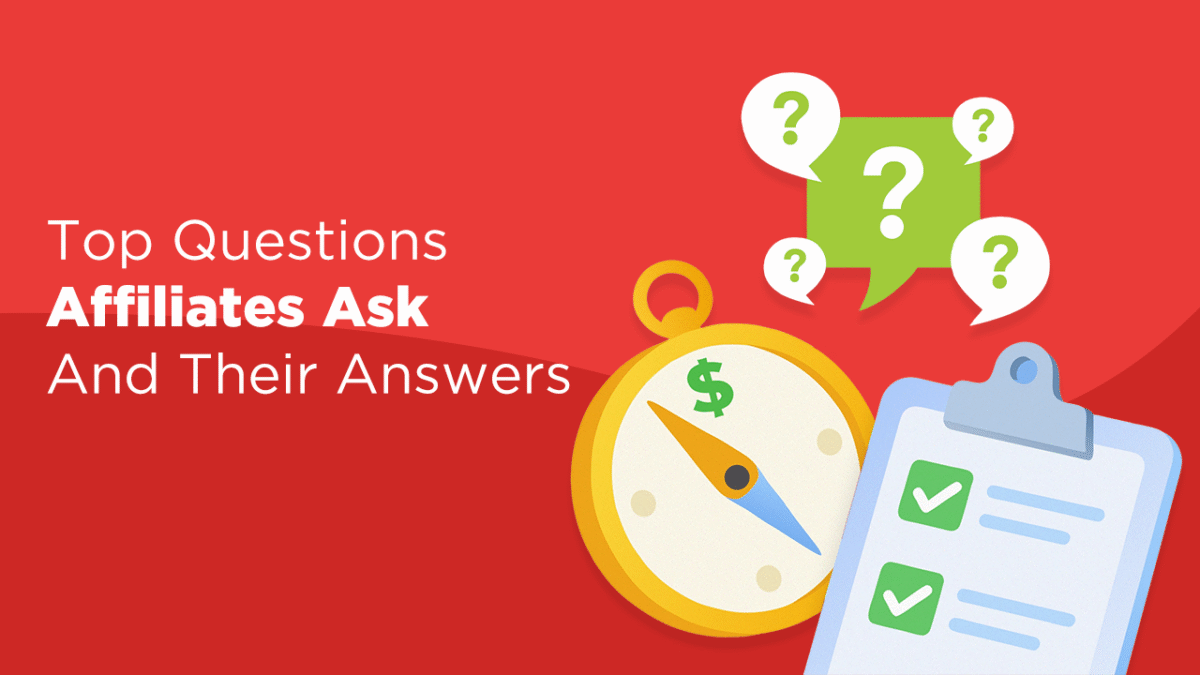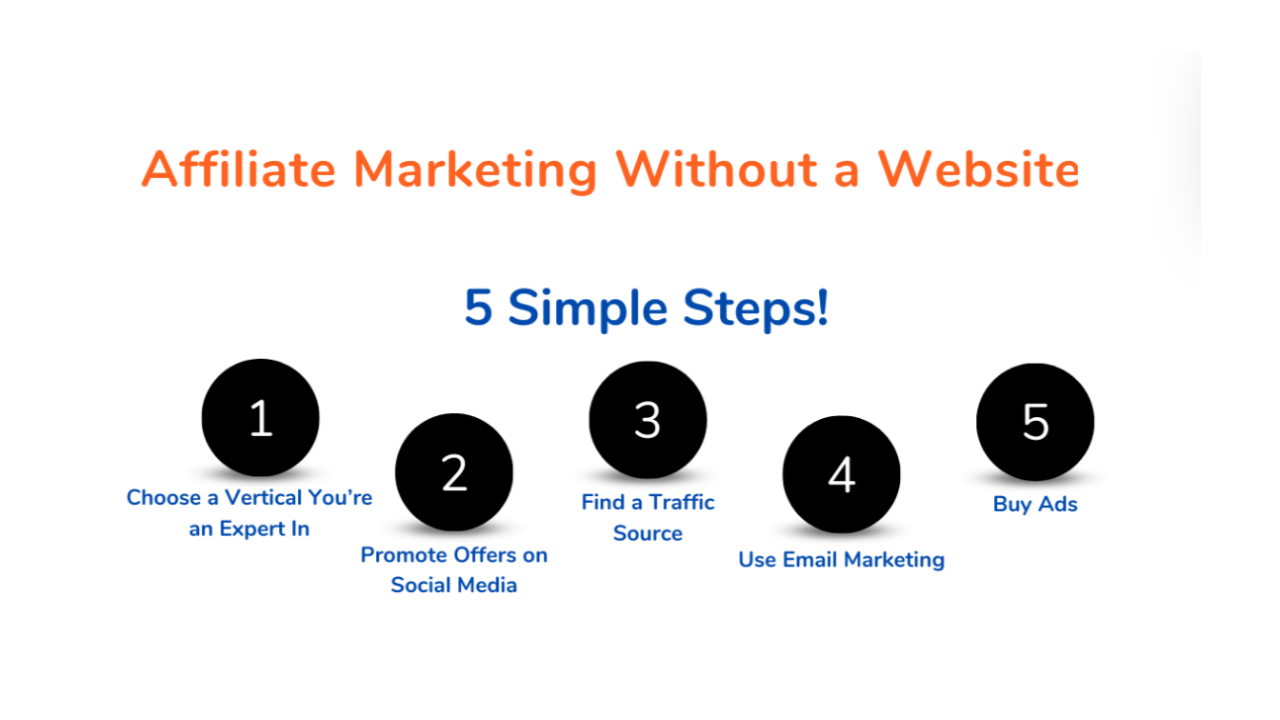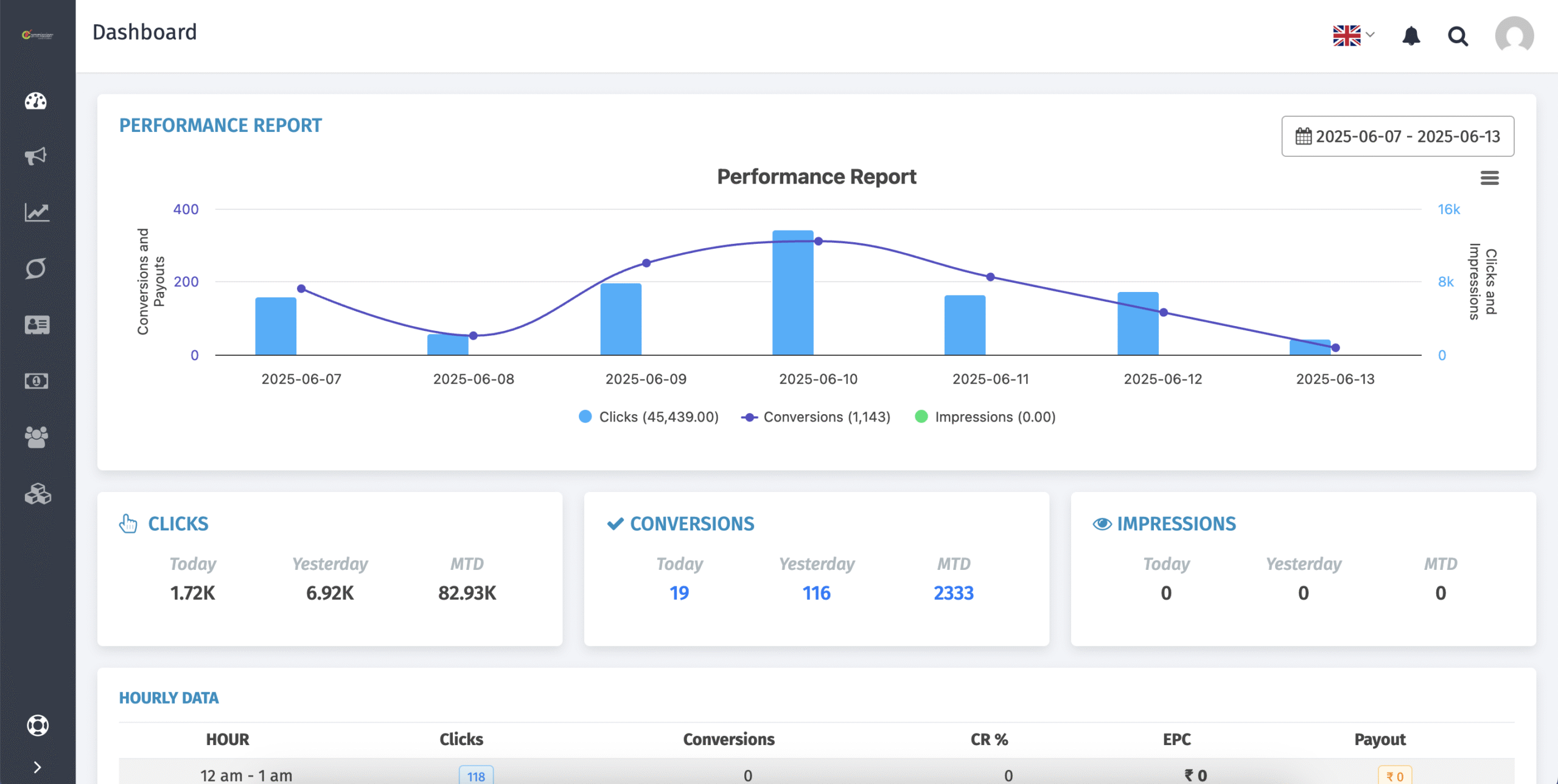
Getting into affiliate marketing is exciting, but also overwhelming. You sign up with an affiliate network, grab your first tracking link, and start promoting. Then come the real questions: Why isn’t my sales tracking? What’s a good EPC? Should I join multiple programs or stick to one? These are not just beginner doubts; they’re the kind of questions even experienced affiliates ask when scaling up.
Affiliate marketing is growing fast. According to Backlinko’s 2025 Affiliate Marketing Report, global affiliate marketing spend is projected to hit $14 billion this year, with 81% of advertisers actively using affiliate programs.
That means there’s more competition, more platforms, and more noise. But it also means one thing: asking the right questions is no longer optional. It’s what sets serious affiliates apart. This blog provides clear, honest answers to the 20 most common affiliate questions, so you can stop guessing and start earning smarter.
Affiliate marketing is a performance-based partnership where individuals (affiliates) promote a brand’s products or services online and earn a commission for each successful sale, lead, or action generated through their efforts.
Here’s how it works: Advertisers or brands list their campaigns on an affiliate network like vCommission, defining how much they’ll pay per sale, signup, or other desired action. Affiliates then join these campaigns, receive unique tracking links, and promote the brand across platforms such as blogs, YouTube, Instagram, Telegram, email, or paid media.
You don’t need to handle inventory, shipping, or customer service. The advertiser fulfills the order and supports the customer, while the affiliate network ensures your conversions are tracked and your commissions are paid on time. Your focus is just on promotion. It’s a great source of income for content creators, influencers, bloggers, or anyone who wants to monetize their audience without setting up a full business.
There’s no fixed number, your earnings depend on the campaign, your traffic quality, and how consistent you are. Some affiliates earn a few thousand rupees per month when starting out, while experienced ones can make even lakhs monthly. It all comes down to choosing the right campaigns and promoting them in the right way.
High-ticket items (like electronics or travel bookings) often pay more per conversion, but may have fewer buyers. Low-ticket but fast-moving products (like beauty or fashion) may bring in smaller commissions, but in higher volumes.
Affiliate networks usually offer clear commission structures, so you know how much you’ll earn per sale or action. With vCommission, for example, some campaigns offer a flat payout, while others offer a percentage on the total cart value.
Also remember: it’s not just about traffic, it’s about quality traffic. If your users are engaged and ready to buy, your conversion rate will be higher, and so will your earnings. Affiliate marketing can be part-time pocket money or a full-time income stream. But either way, you’ll need patience, smart promotion, and the right tools to grow steadily.
Picking the best affiliate program isn’t just about earning more per sale; it’s about choosing what suits your content and audience.
Think about who your audience is. If you create fashion content, promoting beauty or lifestyle products will likely give better results than promoting tech or travel. The closer the product is to your niche, the better your chances of earning.
Also, check how long the cookie lasts and how the commission is paid. Some programs give you credit if someone buys within 30 days. Some offer a fixed amount per sale, while others give you a percentage of what the customer spends.
Look at the allowed traffic sources. Campaigns usually list what’s allowed, like content, cashback, mobile app, media buying, or SMS. If your main promotion method isn’t accepted, the conversions may not be tracked, or worse, rejected during validation.
Joining through a trusted affiliate network makes this easy. Campaign rules, tracking links, allowed channels, and payouts are clearly listed. You don’t have to chase advertisers; the network handles approvals, tracking, and payments.
The right program is one that matches your audience, supports your traffic methods, and comes with clear guidelines. That’s how you build long-term, reliable earnings.

No, having a website is not a must. Many successful affiliates follow five simple steps to promote offers without one. You can choose a vertical you know well, promote offers on social media like Instagram or Telegram, find a traffic source that fits your audience, use email marketing, or buy ads to reach more people. What matters is that the traffic source is approved for the campaign you’re working on.
Campaigns usually list allowed traffic channels, like content, coupon, email, SMS, or cashback, so you can pick ones that fit how you want to promote. Choose the channel that works best for you and stay within the campaign rules for smooth tracking and earnings.
The best content is the kind that helps people. Instead of just showing a product, explain how it works or why it’s useful. This could be a product review, a comparison, a “top 5” list, or even a simple how-to guide. For example, if you’re promoting skincare, a blog or video like “How I Fixed My Dry Skin Using This Serum” works better than just posting a discount code.
You don’t need fancy equipment or long posts. Even short videos, Instagram stories, or Telegram messages can work well, if they’re clear and honest. People are more likely to buy when they feel your recommendation is real and helpful.
The most important thing? Build trust with your audience. If they believe you’re giving good advice, they’ll click your links and try the products for themselves.
One of the most common frustrations affiliates face is when they see traffic but no conversions showing up. There can be several reasons for this:
To fix tracking issues, double-check your promotion methods against the campaign rules, make sure you’re using the correct links, and reach out to your affiliate manager if conversions still don’t show. It’s better to troubleshoot early than lose commissions.
Affiliate marketing is not a get-rich-quick model. Some affiliates see results in a few days, others take weeks or even months. It depends on your traffic source, how you promote the product, and how well it matches your audience.
If you’re sharing links through content like blogs, videos, or social media, it might take time to build trust and drive action. Paid ads can bring quicker results, but only if they’re targeted and follow the campaign rules.
Once your links are live and tracking is set up correctly, your clicks and conversions are recorded in real-time. But turning those clicks into earnings requires testing, patience, and consistency. The more effort you put into understanding what works, the faster you’ll grow.
Once you start earning commissions from your affiliate campaigns, the next big question is: when will that money land in your account? Affiliate networks’ payment cycles can stretch to 60 or even 90 days after the month in which the sale was made. This delay is often due to long validation windows, advertiser-side approvals, or manual invoicing and reconciliation.
At vCommission, we simplify this by following a standard NET30 payment cycle. That means payments are processed 30 days after the month ends, provided your conversions are approved and you meet the payout threshold. For example, if you earn commissions in July, your payment will typically be processed and paid out by the 10th of August, offering a faster and more predictable payout timeline compared to many industry peers.
Payment methods are simple. Indian affiliates receive their earnings directly into their bank accounts. Affiliates outside India are paid via Tipalti or wire transfer, depending on your earnings and location. Just make sure your bank or payment details are filled out correctly in your vCommission profile, so you never miss a payout.
The type of traffic you can use depends on the specific campaign. In an affiliate network, each campaign clearly mentions what’s allowed and what’s not. Some allow content marketing, coupon and cashback promotions, social media sharing, email marketing, SMS, or even media buying. Others may only allow a few of these.
Before you promote any offer, it’s important to check the allowed traffic sources mentioned in the campaign details. Promoting through unapproved channels can lead to rejected conversions or even removal from the campaign.
If you’re unsure, it’s always best to ask your affiliate manager. This helps keep your account safe and ensures your efforts turn into approved commissions.
If a customer cancels or returns their order, the sale becomes invalid and you don’t earn a commission. This is because commissions are only paid for completed, successful sales where the brand actually makes money. Most programs review these actions during the validation period (usually 30–45 days), after which approved sales are locked for payout.
To avoid surprises, always keep an eye on your panel’s status updates. It will show whether a sale is approved, pending, or rejected, so you can track your performance clearly.
Once someone makes a purchase through your affiliate link, the sale doesn’t get approved instantly. It first goes through a validation process. This step ensures that the order is genuine, meaning it wasn’t canceled, returned, or marked as fraudulent.
The approval time varies brand by brand. Some campaigns may take around 30 days. For others, it might be a bit shorter or longer. You’ll see the exact validation window in the campaign details before you start promoting.
After this period, the sale is either approved or rejected, and your commission is updated accordingly in your panel. Keeping track of your pending and approved conversions regularly is a good habit; it helps you understand how your campaigns are performing.
To get faster approval, make sure your affiliate account is properly set up. Include details like your traffic sources, whether you run a blog, a Telegram group, a coupon site, or do media buying. The more clearly you describe how you’ll promote campaigns, the easier it is for the team to review your application.
Campaign approvals are reviewed by the account management team, so having a complete and transparent profile helps them make quicker decisions. Using reliable platforms and maintaining a good performance history can also work in your favor.
Also, using known and trusted platforms instead of suspicious or blank domains helps speed things up. Having a good history of past campaigns can also work in your favor.
Sometimes, after applying to a campaign, your application stays in “pending” for a while. This happens because the network’s review team needs time to check if your promotion methods and traffic sources match the campaign’s rules.
Pending status means your application is under review. It could take a few hours to a couple of days. To speed up approval, make sure your profile is complete and clearly explains how you plan to promote.
If it takes too long or you have questions, you can reach out to support or your affiliate manager for help.
Social media is a great way to share affiliate links and reach a wide audience. To promote effectively you have to use short and clean links to make sharing easier, create helpful content like posts, videos, stories, or reels that explain the product or offer value. Always let people know if your post includes affiliate links to keep things clear and honest. Use the right hashtags and simple, clear messages to get more clicks.
Also, choose the platform that fits the product. Visual products do great on Instagram and TikTok, while Telegram and WhatsApp are better for sending deals and coupon links. Before promoting, always check if the campaign allows social media promotions.

An affiliate dashboard is your personal conversion tracking center where you can track all your activity. It shows details like how many clicks your links have received, how many conversions you made, and the commissions you’ve earned.
You can also view which campaigns are performing best, check the status of your payments, and access creative materials like banners and tracking links provided for your promotions.
Regularly checking your dashboard helps you understand what’s working and where you can improve, making it easier to grow your affiliate income.
Many affiliates make mistakes that affect their earnings and account health. These include:
Sticking to clean promotion methods and monitoring your results regularly helps keep your account safe and your earnings steady.
To grow and scale your affiliate income, focus on using a variety of traffic sources such as social media, blogs, and email marketing. Paid campaigns (media buying) are also supported and can help you get faster results, but it’s important to follow campaign rules and get approval before starting. To widen your reach, you can build an email list and collaborate with influencers. Meanwhile, you can also explore new product categories to tap into fresh opportunities.
Prioritizing campaigns with higher earnings per click or recurring commissions can bring steady, long-term income. Consistency and testing different methods will help you find the best strategies to increase your earnings over time.
A sub-affiliate or referral program lets you earn money by inviting other affiliates to join the platform. If they sign up using your referral link and start earning commissions, you get a small share of their earnings as a bonus, without doing any extra promotion yourself.
At vCommission, this feature is available. It’s a simple way to build passive income, but make sure to follow the referral rules and only invite genuine, quality affiliates to stay eligible.
Yes, but only if the campaign allows it. At vCommission, every offer clearly shows which traffic sources are approved. Some campaigns allow paid ads on Google, Facebook, or Instagram, while others don’t. You can check this under “Allowed Promotion Methods” in your vCommission dashboard before starting. Always follow the rules to avoid rejection.
Before running any paid campaign, always double-check the rules. Avoid using brand keywords if restricted, and make sure your landing pages follow ad platform policies. Promoting the right way keeps your account safe and improves your chances of long-term success.
vCommission gives you a real-time dashboard to track your performance. Once you log in, you can see clicks, conversions, approved sales, and your earnings, everything in one place. You can also check which campaigns are performing well, how much traffic you’re sending, and what’s getting approved.
You can use filters to check data by date, campaign, or traffic type, which helps you see what’s performing well. For more detailed tracking, you can export reports or set up postbacks and macros to integrate with your own tools.
Affiliate marketing can feel confusing at first, but once you understand how it works, it becomes a smart and rewarding way to earn online. If you’re just starting out or looking to grow, asking the right questions, and finding clear answers, can save you time and help you earn faster. From choosing the right campaigns to tracking performance and getting paid, every step matters.
With vCommission, you don’t have to figure it all out alone. You get access to high-performing campaigns, real-time insights, and expert support that actually helps you grow. We simplify your affiliate journey, find the tools and transparency you need to succeed, minus the fluff. Join vCommission and start building a smarter, more consistent income stream.